5 Ways You’re Making Stains Worse When Trying to Remove Them
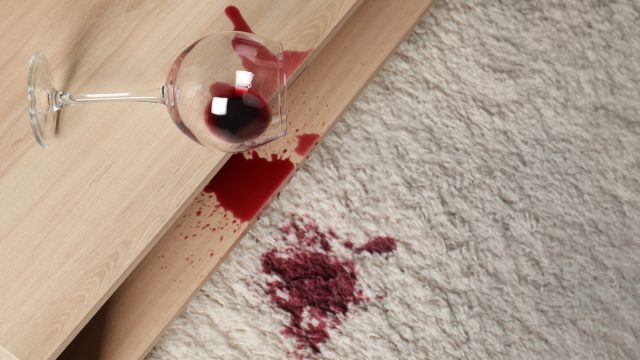
Whether you’ve just spilled wine on your carpeted floor, or your toddler has taken one of blouses for their latest art project, we all know the sudden horror of a quickly forming stain. Unfortunately, some of these otherwise minor moments have the potential to stick around for much longer than we’d like—especially if you’re not cleaning them correctly. You may be tempted to try any available stain removal method to avoid paying a permanent price. But one bad call could leave you far worse off. To help you avoid this, we turned to the experts to gather insight on the cleaning mistakes to avoid. Read on to discover five ways you could be making stains worse when trying to remove them.
READ THIS NEXT: What Happens When You Don’t Wash Your Sheets Every Week, Doctors Say.
1
You’re scrubbing them too vigorously.
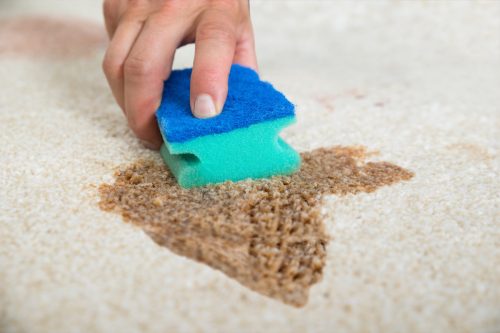
A little elbow grease isn’t going to fix the problem in the case. In fact, it might make things worse.
“When faced with a stubborn stain, the natural instinct is to scrub it aggressively,” Karina Toner, a cleaning expert and the operations manager at Spekless Cleaning, tells Best Life. “However, this can cause the stain to spread and penetrate deeper into the fibers.”
So instead of vigorously trying to scrub the stain out, Toner recommends blotting it with a clean cloth or paper towel—and gently, at that.
“Applying too much pressure can push the stain further into the fabric, making it even harder to eliminate,” she warns.
2
You’re using hot water.
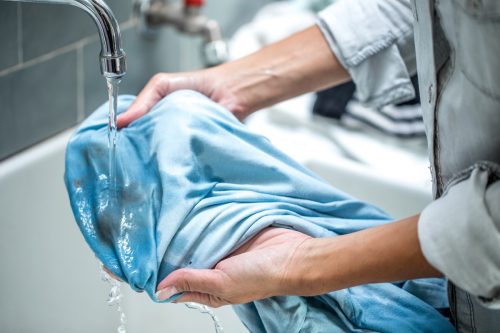
Hot water can masterfully tackle a lot of things, like germs and bacteria. But don’t crank up the heat when you need to clean certain messes, Thomas Giarraputo, a cleaning expert and vice president at Executive Cleaning Services, warns.
“It may seem counterintuitive, but using hot water can sometimes set certain types of stains, making them more difficult to remove,” he says.
According to Giarraputo, hot water is especially bad for protein-based stains like blood or sweat.
“Instead, try using cold water and a suitable stain remover,” he recommends. “If you’ve already used hot water, try washing the item again with cold water and stain remover.”
3
You’re using bleach on color-based stains.
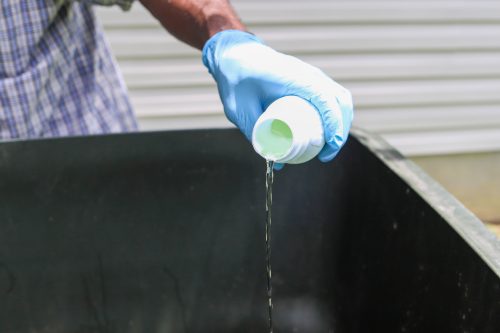
Like hot water, bleach is another common solution that is not suitable for all stains. Despite being a powerful remover, Toner says this chemical product should be used with caution.
“When dealing with color-based stains, such as ink or wine, using bleach can actually make matters worse,” she warns.
As Toner further explains, the harsh chemicals in bleach will also strip color away from the fabric in these cases—leaving you with a faded or discolored spot in its place.
“So opt for color-safe stain removers specifically designed for colored fabrics,” she advises. “These products are formulated to tackle stains without causing any color damage.”
For more cleaning advice delivered straight to your inbox, sign up for our daily newsletter.
4
You’re not pre-treating stains.

You may need to use caution with things like hot water and bleach, but that doesn’t mean you should skip using any product at all.
“Some people toss their stained clothes straight into the washing machine, hoping the wash cycle will take care of it,” Giarraputo says.
Doing this can actually cause the stain to set in even further.
“Always pre-treat stains before washing by applying a bit of laundry detergent, dish soap, or specialized stain remover directly to the stain,” Giarraputo shares. “If you’ve already washed and dried a stain, try pre-treating and washing again.”
5
You’re letting them sit for too long.
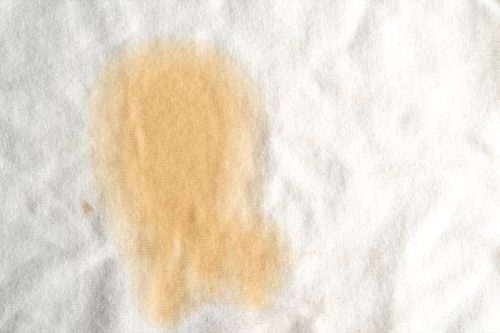
Pre-treating isn’t the same as soaking the stained item in water and leaving it to sit around for awhile. You should be rinsing the stain, using a stain remover, and then immediately washing it in the washing machine, according to Karen Lee, a cleaning and organization professional who also founded Smart Robotic Home.
“Most of the time when we just soak it and leave it, we forget about it and the garment dries as well as the stain,” Lee explains. “This will make it tougher to remove later on, so try and clean it as soon as you can or at least get some clothes detergent on the stain ASAP.”
Mark Melton, a cleaning expert and founder of Queen’s Carpet Cleaning, also warns against delaying treatment in any way—even if you’re trying to soak it.
“Allowing stains to be set for an extended period can make them more stubborn and difficult to eliminate,” he says. “Promptly address stains by blotting and treating them as soon as they occur.”